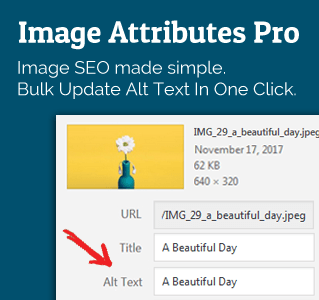A guest post by Steeve. If you wish to write one, check out the guest-posting guidelines and details.
The top most common web design mistakes most designers make. There are several websites where web designers were unable to come up with a proper web designing solution.
Page Titles

Untitled documents
Untitled Document is the default title for pages produced in Dreamweaver and other web design programs. Many of them forget to change it.
Same title for all pages
The title is very vital. Help the world know which of your pages they want to see.
Non-descriptive titles
The page title is the headline for your link in search results. Not to mention an important factor in determining those results. Instead of “Tom’s Page” try something like “Cartoons by Tom” or “World of Cartoons.”
Meta Tags

Duplicate Meta information on all pages
The keywords and description Meta tags in the head of your webpage help all search engines to classify your page. If you duplicate the tags across all WebPages of your website, they will look similar to searchers. Customize the keywords and descriptions for each page or don’t use them at all.
Site Structure

No index.html in the root directory
By default the index.html or index.htm, index.php, default.htm, etc. is displayed when you visit http://www.yourdomain.com. If you don’t incorporate it, users will get an error message.
Disorganized file structure
How you arrange your website files won’t influence what the website looks like but lack of organization can make your life hell when you’re trying to update or redesign the site. Use directories (folders) to help organize your pages and images.
Uploading non-web files
Unintentionally uploading a few Photoshop files can eat up your disk space speedily. Store your resource files such as Photoshop images, Word files, etc. in a separate folder outside your local web folder.
Pages

Under Construction pages
If a page isn’t ready to post then don’t post it. Keep in mind “Under Construction” is believed to be a temporary condition file and, after a month or, so it starts to seem permanent.
Frames
There are good reasons why you may want to use frames but there are no good reasons to actually use them.
Horizontal scrolling
The smallest amount common denominator for monitor width is currently 800 pixels. People need to leave space for scroll bars and page margins etc. so 760 pixels is a good standard width for your web pages. Wider may be satisfactory depending upon your target viewers.
Worthless content
If you don’t have anything to say, please then don’t say it.
Out-of date content
If your content is no longer appropriate, delete it and upload new one, if you’re going to incorporate a copyright notice, update it each year.
Overly long pages
Differing to popular belief, there’s nothing wrong with long web pages if the content deserves it. But, if it can be done rationally, it’s usually a good idea to have several shorter pages instead of long pages. If you have long pages then do offer additional navigation to make it easy for readers to move within the pages.
Unnecessarily short pages
In an attempt to make the content fit the design, most of designers regularly resort to a series of short pages when one long one would be more user-friendly.
Orphan pages
Pages you fail to remember to supply links that don’t exist as far as the rest of the world is concerned.
Alien pages
Pages that totally disregard the look and feel of the rest of your website leave users feeling like they’ve been suddenly transported to a website far, far away.
Have fun designing!
The Author, Steeve, works in web design at PLAVEB Corporation.






Perfect List!
Thanks 🙂
Nice information. It is really worthy to read for. Great job. Congrats!
Nice of you 🙂
Useful tips for a web designer.
Thank You!